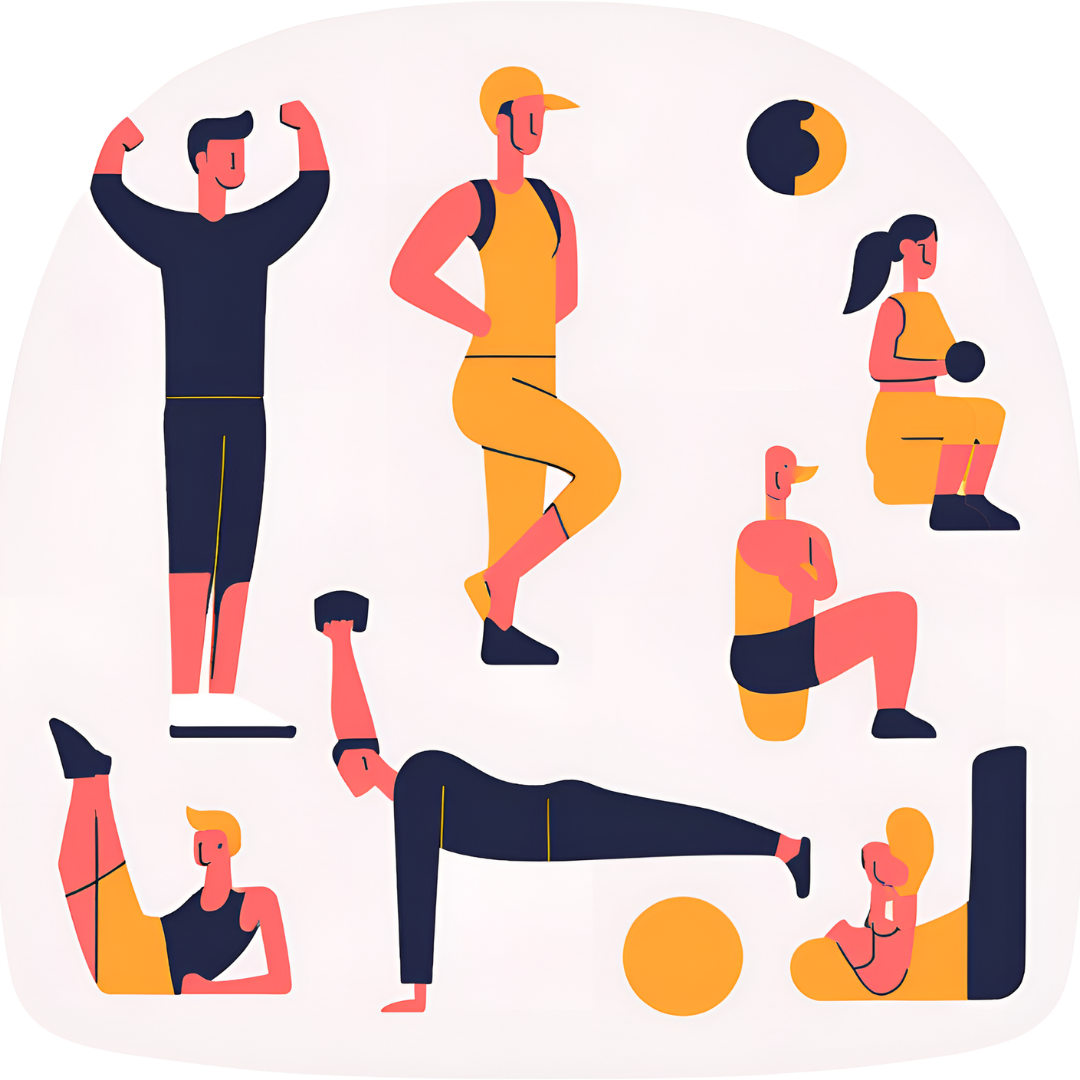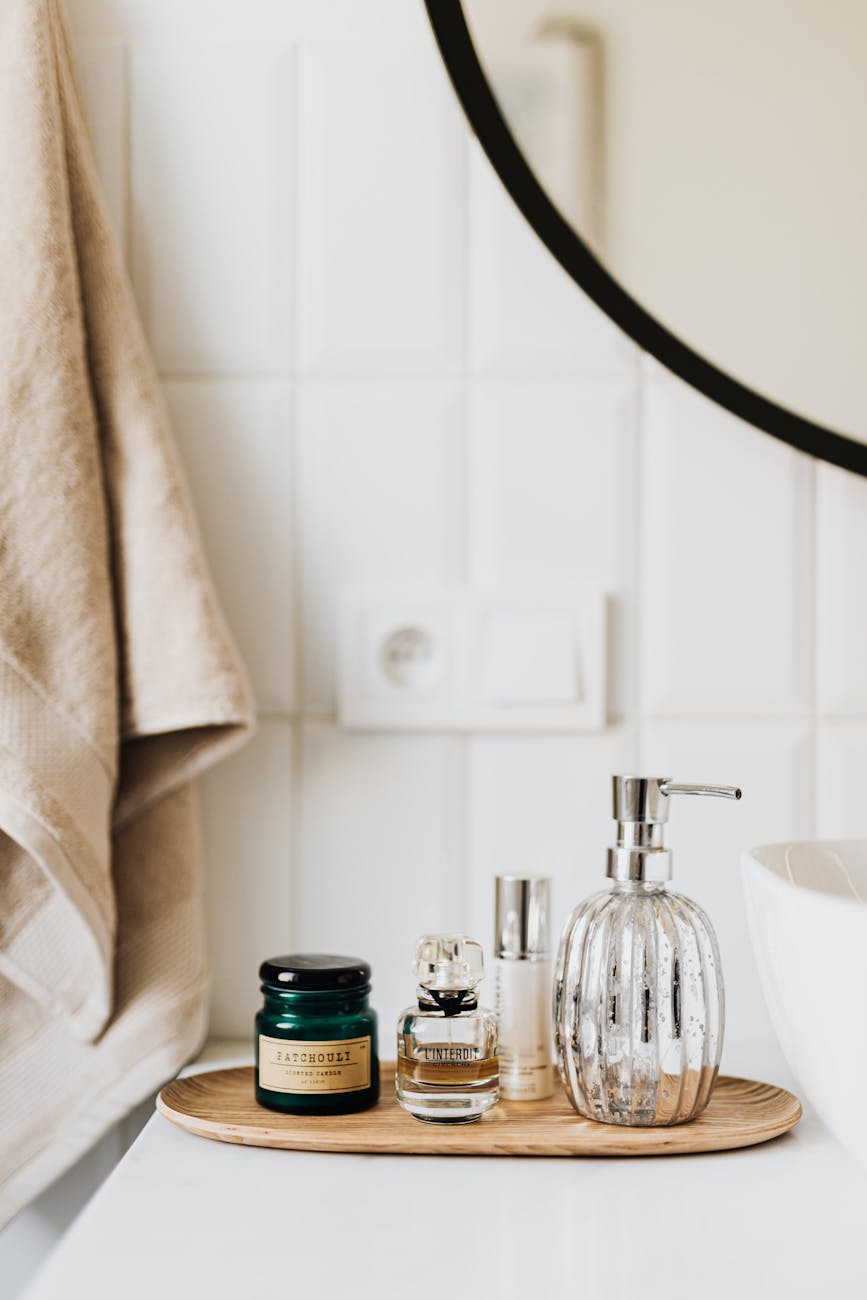10 Must-Try Fitness Trends of 2025 for a Fitter You
Introduction
Welcome to Fitness Trends 2025 — a year where fitness evolves from routines and repetition into a smarter, more personal, and genuinely transformative lifestyle. Whether you’re a beginner, a busy professional, or a seasoned athlete, the Fitness Trends 2025 landscape is stacked with must-try, powerful approaches designed to accelerate results, prevent injury, and improve long-term health.
This essay covers 10 Must-Try Fitness Trends of 2025 for a Fitter You. For each trend you’ll get: what it is, why it’s game-changing, how to start, practical examples, and tips to make it work for your lifestyle. At the end you’ll find a comparison table and FAQs to help you choose which trends to try first.
Table of Contents
Trend 1 — AI-Powered Personal Training: Personalized, Precise, and Powerful
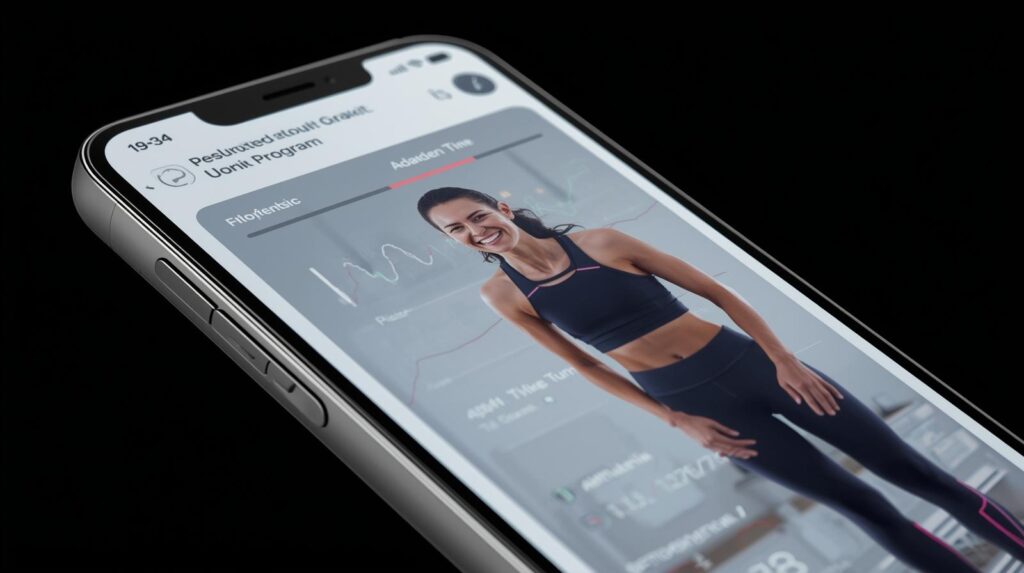
What it is
AI-powered training uses algorithms plus your personal data (workouts, heart rate, sleep, movement form) to build adaptive workout plans. Unlike static programs, these plans evolve as you progress.
Why it’s a must-try
AI gives you the benefits of a personal coach without the constant cost. It tailors intensity, volume, and recovery recommendations to your current state — making every session efficient and safe.
How to start
- Choose a reputable app or platform that integrates with your wearable.
- Input your goals (strength, fat loss, endurance, mobility).
- Follow the adaptive sessions, and let the system recalibrate based on your feedback and metrics.
Real-world use
If you’re a busy parent, AI can compress strength work into 20 minutes on high-fatigue days and expand it to 45 minutes when you have more energy — all while monitoring heart rate variability (HRV) to avoid overtraining.
Tip
Use AI as a guide, not gospel. Combine its recommendations with your subjective feeling — energy, sleep, soreness — for best results.
Trend 2 — Virtual Reality (VR) Fitness Adventures: Make Every Workout an Experience

What it is
VR fitness transforms ordinary exercise into immersive adventures: boxing an avatar champion, hiking virtual peaks, or dancing in neon arenas. Motion tracking and gamified goals keep motivation high.
Why it’s a must-try
Boredom is fitness’s silent enemy. VR makes workouts fun, social, and addictive in a productive way. It’s also a great option for people who prefer home workouts or need low-impact options disguised as play.
How to start
- Pick a VR headset with fitness apps and good motion tracking.
- Start with sessions focused on cardio and mobility.
- Add multiplayer sessions for social accountability.
Practical example
A 30-minute VR boxing class can deliver interval cardio and agility training while burning calories and improving coordination.
Tip
Set a real-world cool-down after intense VR play: five minutes of stretching or slow walking to ground your body.
Trend 3 — Longevity-Based Training: Exercise for a Longer, Healthier Life
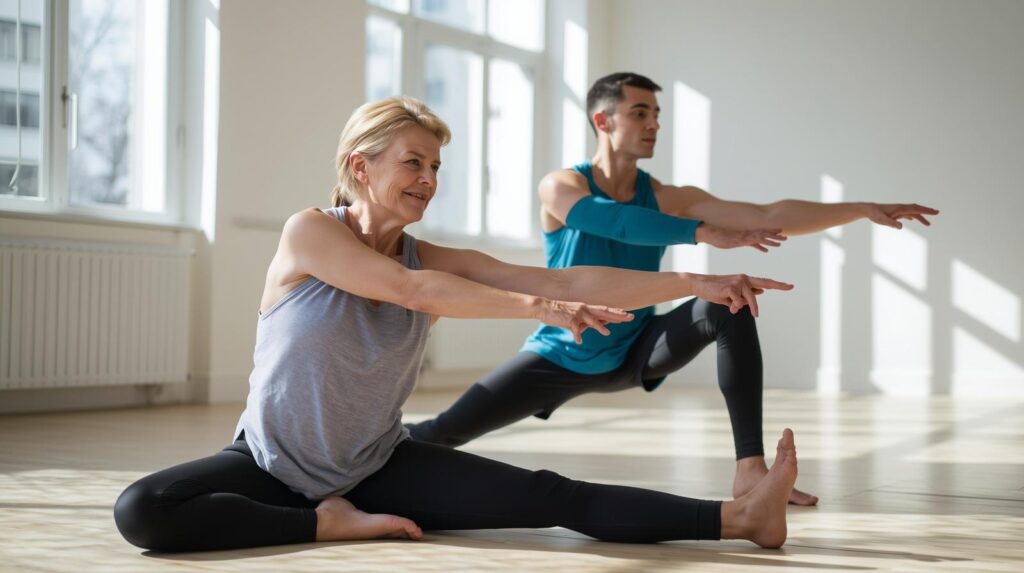
What it is
Longevity training prioritizes mobility, joint health, metabolic resilience, and cardio capacity — not just looking fit but staying fit into older age.
Why it’s a must-try
Short-term aesthetic goals are fine, but longevity training reduces risk of injury, chronic disease, and functional decline. It’s fitness with a future.
How to start
- Add mobility or joint integrity work to every session.
- Prioritize compound strength training 2–3x/week.
- Include low-impact cardio and interval work for cardiovascular resilience.
Practical example
A weekly plan could combine two strength days, two mobility-focused sessions (yoga/Pilates), and one interval cardio day.
Tip
Think in decades, not months. Track functional tasks (carry groceries, climb stairs) as metrics of success.
Trend 4 — Biohacking Workouts: Science-Driven Optimization
What it is
Biohacking in fitness means using evidence-informed tools — cold exposure, red-light therapy, targeted supplementation, glucose monitoring — to sharpen recovery and performance.
Why it’s a must-try
When used safely and ethically, biohacking can speed recovery, improve sleep, and fine-tune training adaptations.
How to start
- Start with small, proven hacks: consistent sleep schedule, cold showers, and mobility.
- Consider data points like sleep and HRV before experimenting with advanced methods.
- Consult a healthcare professional for supplementation or invasive monitoring.
Practical example
Pairing a high-intensity interval session with a 10-minute contrast bath and a guided sleep routine can enhance recovery and readiness for the next workout.
Tip
Document changes — don’t chase every trend. What helps one person may be neutral or harmful to another.
Trend 5 — Hybrid Fitness Communities: Best of Online + In-Person
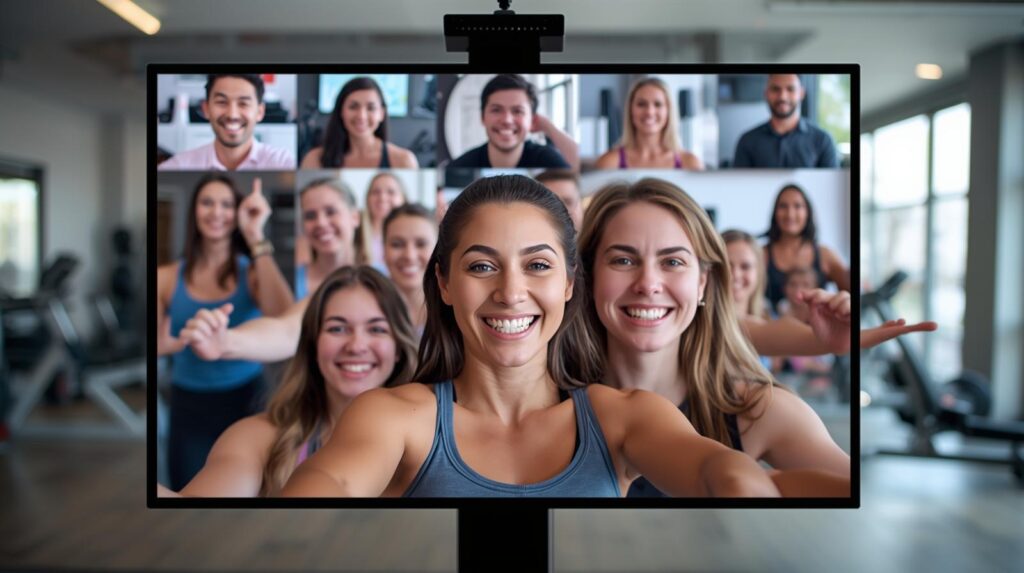
What it is
Hybrid fitness blends gym sessions with virtual classes and community challenges. It combines flexibility of home training and accountability of in-person groups.
Why it’s a must-try
This model fits real lives — attend a live class when possible and rely on virtual tools when schedules clash.
How to start
- Join a hybrid gym or program offering live classes, on-demand content, and community features.
- Schedule 1–2 in-person sessions per week and supplement with online workouts.
Practical example
Local gym strength sessions twice a week, plus three on-demand cardio/mobility sessions you do at home.
Tip
Use community features (leaderboards, group chats) for motivation but focus on consistency, not competition.
Trend 6 — Functional Strength Training 2.0: Real Moves for Real Life
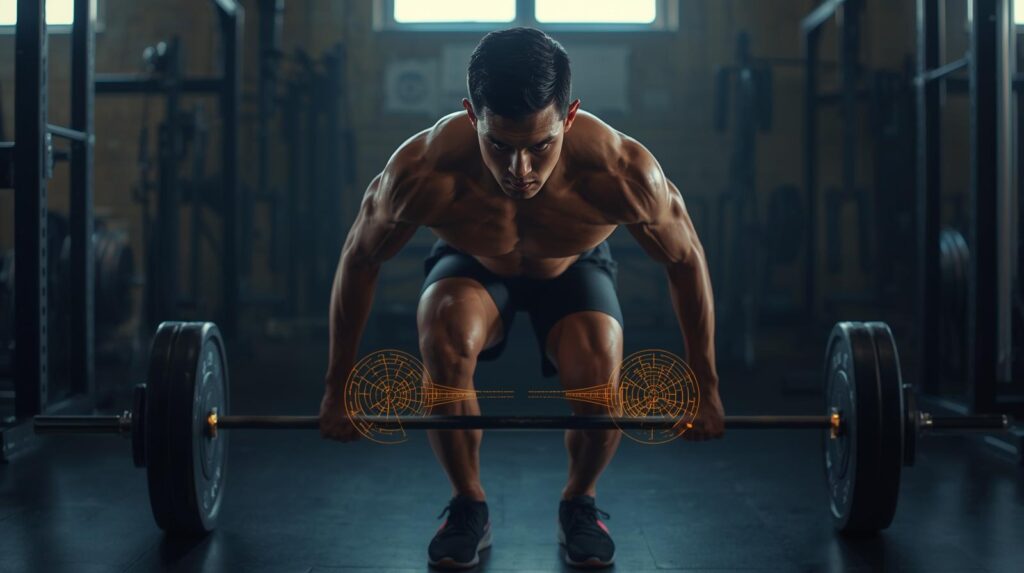
What it is
Functional strength focuses on movements that support daily activities: lifts, carries, pulls, and rotational stability — now enhanced with biomechanical tracking.
Why it’s a must-try
It increases real-world capability and reduces injury risk. The 2.0 era adds precision: movement analytics ensure your body moves efficiently.
How to start
- Prioritize compound lifts and loaded carries.
- Add unilateral and rotational work for balance.
- Use video analysis or coaches (even AI) to correct form.
Practical example
Instead of endless machine isolation, do farmer carries, deadlifts, single-leg Romanian deadlifts, and core rotations.
Tip
Form matters more than load. Always prioritize technique to get durable strength.
Trend 7 — Recovery-Centric Fitness: Train Smart, Recover Smarter

What it is
Recovery is front and center: sleep optimization, active recovery sessions, percussive therapy, cryotherapy, and guided mobility are built into programs.
Why it’s a must-try
Recovery multiplies results. You get stronger, faster, and less prone to breakdown when you prioritize rest like a performance variable.
How to start
- Plan recovery as a scheduled part of your week.
- Track sleep and soreness.
- Include low-intensity movement, stretching, and breathwork.
Practical example
Swap one intense session for a mobility + light cardio day, or try an afternoon guided breathing session after a stressful workday.
Tip
Use recovery metrics (sleep quality, HRV) to decide session intensity the next day.
Trend 8 — Eco-Friendly Fitness: Sustainable Gains
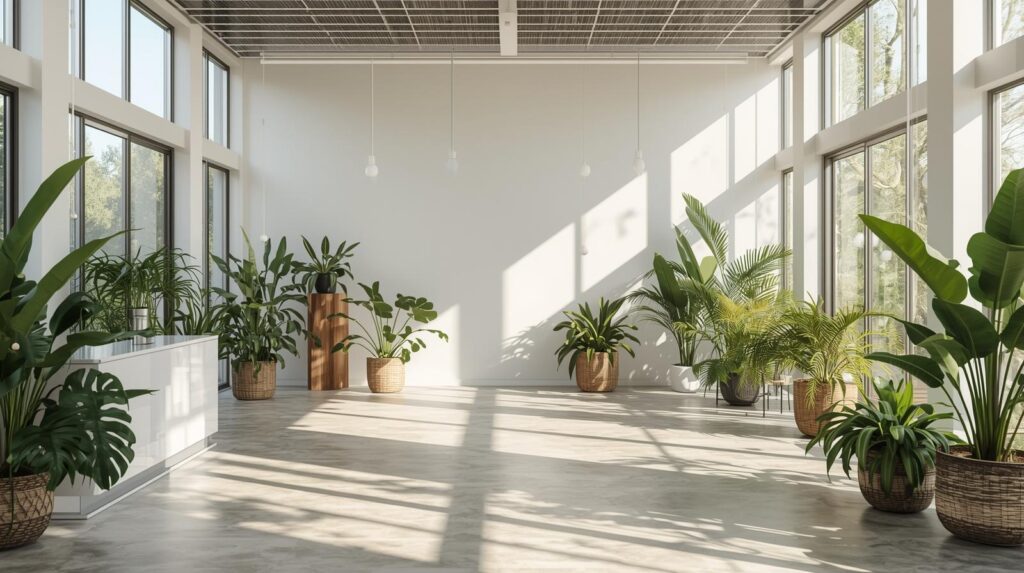
What it is
Sustainability meets fitness: gyms use renewable energy, equipment made from recycled materials, and brands offer durable, repairable gear.
Why it’s a must-try
Your fitness choices reflect values. Choosing sustainable gear and gyms reduces environmental footprint and supports ethical business.
How to start
- Invest in long-lasting equipment (resistant bands, adjustable dumbbells).
- Shop for mats and clothing from recycled or responsibly sourced materials.
- Support eco-minded gyms and studios.
Practical example
A solar-powered studio offering outdoor bootcamps that also plant trees for every membership.
Tip
Small changes add up: a sustainable yoga mat and a reusable water bottle are easy first steps.
Trend 9 — Mental Wellness Workouts: Mind + Body = Peak Performance

What it is
Programs that intentionally combine mental health practices — breathwork, mindfulness, cognitive training — with physical workouts to improve mood, focus, and resilience.
Why it’s a must-try
Fitness isn’t only physical. Integrated programs reduce stress, improve adherence, and can even enhance cognitive function.
How to start
- Add a 5-minute breathing practice before or after workouts.
- Try neuro-fitness classes that pair strength moves with cognitive tasks.
- Use meditation apps that sync with your cooldown.
Practical example
Strength circuits with brief memory or reaction tasks between sets to maintain a mind-body challenge.
Tip
Track mood and clarity as much as miles and reps. Improvements there are wins too.
Trend 10 — Wearable Health Tech Evolution: From Steps to Systems
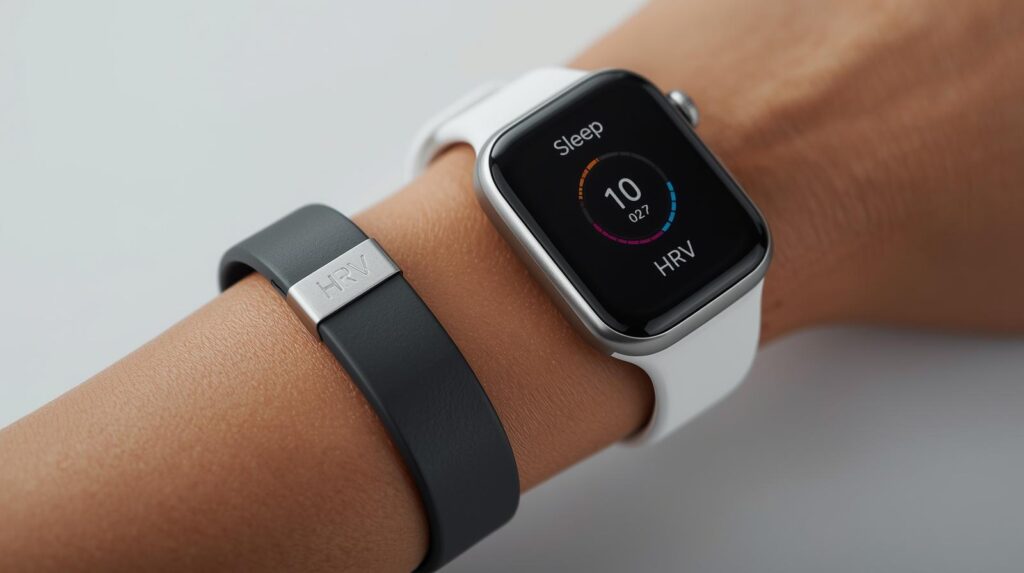
What it is
Wearables have evolved into integrated health ecosystems, tracking not just steps but hydration, blood oxygen, sleep stages, posture, and offering coaching nudges.
Why it’s a must-try
Data, when used wisely, empowers better choices. A wearable can tell you when to push, when to rest, and what to prioritize for performance.
How to start
- Choose a device that aligns with your priorities (sleep, recovery, training load).
- Use insights to guide weekly programming rather than obsessing over daily fluctuations.
- Combine wearable data with subjective feedback.
Practical example
A wearable flags poor sleep and reduced HRV; you swap an intense lifting day for a mobility + light cardio session and notice better performance the following week.
Tip
Use wearables as a decision-support tool — not as an emotional trigger.
Comparison Table — Quick Look at the 10 Trends
| # | Trend | Best For | Quick Win |
|---|---|---|---|
| 1 | AI-Powered Training | Busy people who want personalization | Let AI shorten or extend workouts to suit energy |
| 2 | VR Fitness | Those who dislike traditional workouts | Replace one cardio day with VR adventure |
| 3 | Longevity Training | Anyone planning for long-term health | Add joint/mobility work twice weekly |
| 4 | Biohacking | Data-driven experimenters | Start with sleep and hydration improvements |
| 5 | Hybrid Communities | Social, flexible schedules | One in-person + two online sessions/week |
| 6 | Functional Strength 2.0 | Practical fitness goals | Swap isolation moves for carries and squats |
| 7 | Recovery-Centric | High training volume / busy lives | Schedule 1 dedicated recovery day weekly |
| 8 | Eco-Friendly | Value-driven consumers | Buy a sustainable mat or reusable bottle |
| 9 | Mental Wellness | Stress-affected or busy minds | 5-minute breathwork before/after workouts |
| 10 | Wearable Tech | Data lovers | Use HRV to adjust intensity, not guilt |
How to Choose Which Trends to Try First
- Assess your time and goals. If you’re short on time, AI-guided micro-workouts or wearable-guided adjustments are efficient.
- Pick one practice to integrate per month. Trying too many new things at once sabotages consistency.
- Blend trends. AI + wearables + recovery focus is a potent combination.
- Budget sensibly. Not every trend requires expensive tech — many are low-cost or free forms of optimization.
10 Practical 30-Day Micro-Plans (One per Trend)
- AI Kickstart: Use an AI app, follow 20–30 minute sessions 4x/week, adjust based on app suggestions.
- VR Adventure Month: Swap two cardio sessions/wk with VR workouts. Track enjoyment and calories.
- Longevity Reset: Add 10 minutes of mobility daily + two compound strength sessions/wk.
- Biohack Basics: Prioritize sleep, hydration, and one red-light session/week.
- Hybrid Habit: Attend one live class and three on-demand sessions/wk.
- Functional Focus: Replace two machine workouts with loaded carries and compound lifts.
- Recovery Month: Add sleep hygiene, one cryo/contrast session or long mobility day weekly.
- Eco Swap: Replace disposable water bottles; buy one sustainable gear item.
- Mind-Body Practice: 10 minutes of breathwork or meditation post-workout, 5x/wk.
- Wearable Wisdom: Use HRV/sleep data to adjust daily effort; keep a training journal.
Frequently Asked Questions (FAQs)
Q: Are these trends suitable for beginners?
A: Yes. Many trends scale for beginners. Start slowly — especially with tech and biohacks — and prioritize safe form and recovery.
Q: Do I need expensive equipment to follow these trends?
A: Not necessarily. Wearables and VR can be optional. Many trends (longevity, recovery, mental wellness, functional training) work with bodyweight and simple tools.
Q: How do I avoid injury when trying new tech or methods?
A: Start gradual, keep form as the priority, and pair new tech with professional guidance if possible. Track soreness and adjust.
Q: Which trends give the fastest results?
A: AI-personalization and recovery optimization often yield noticeable benefits quickly because they reduce wasted effort and prevent overtraining.
Q: How do I measure progress beyond weight or looks?
A: Track functional metrics (stair climbs, load carries), sleep quality, mood, energy, and consistency in training.
Final Thoughts — Make 2025 the Year You Build Lasting Fitness
The 10 Must-Try Fitness Trends of 2025 represent a shift from “more is better” to “smarter is better.” Technology, sustainability, and science have made fitness more accessible, more fun, and more effective. Your best next step is to pick one trend that excites you, commit to 30 days, measure the results, and iterate from there.
At Good Life Essence, fitness is more than a routine — it’s an intentional life upgrade. Embrace these powerful, game-changing trends and build the fitter you you deserve.

